Art on Stamps — Alessandro di Mariano Filipepi ~ Sandro Botticelli ~ 1445–1510Welcome to Art On Stamps. As a person with a real passion for art and everything art related it is only logical that I am attracted to postage stamps depicting art as well. I find myself fascinated by this topical area of interest, and now I hope to pass my enchantment on to you with this rare glimpse of the many stamps created from the Art of Alessandro di Mariano Filipepi ~ Sandro Botticelli ~ 1445–1510! |
Best known by his nickname "Botticelli"; which translates to, "little barrel" Alessandro di Mariano Filipepi was an Italian painter of Florentine descent. Although he was extremely successful at the height of his career, Sandro Botticelli fell out of favor during the High Renaissance at the turn of the 16th century and died in ambiguity. Little is known about his early years, but it is believed that Botticelli was trained in the studio of Filippo Lippi. Shown here (left) in a self-portrait. 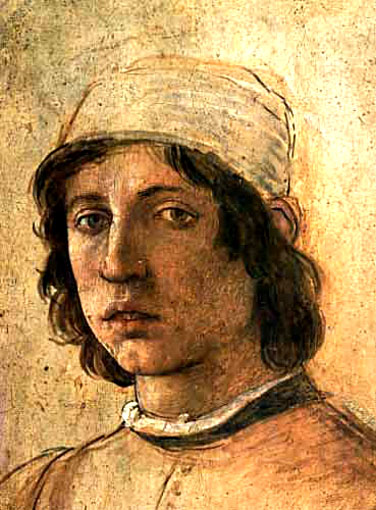 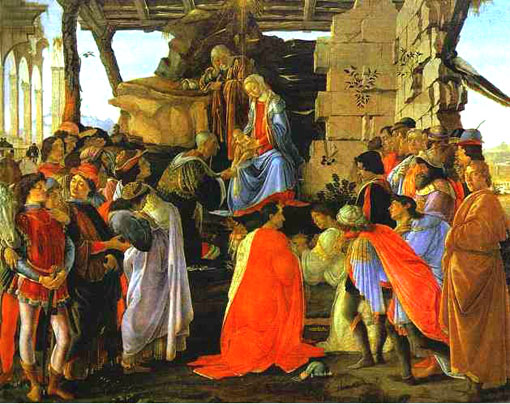 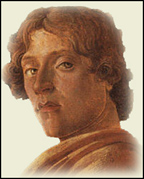 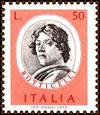 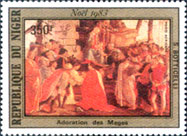 Botticelli too painted a self-portrait of sorts by featuring himself as one of the characters in work Adoration of the Magi. This image of a young Botticelli was later used as the subject of an Italian stamp issued in 1973-74. Adoration of the Magi (above) 1475 ~ This painting was one of the first to secure Botticelli's role as a skilled artist because it was commissioned by the Medici family (one of the ruling families in Italy from the 13th to 17th century). Some of the Medici's portraits are in this very painting. This stamp from Niger (left) issued in 1983 depicts a cropped version of what they refer to as Adoration of the Kings. 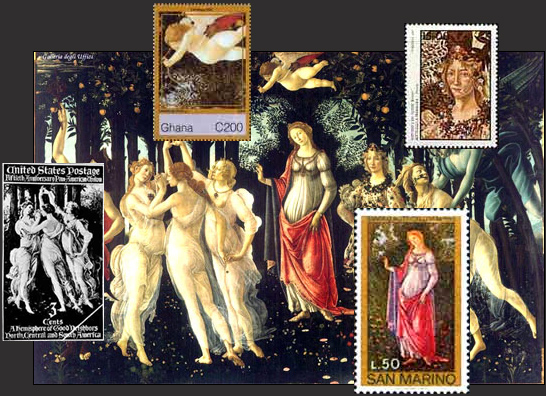 During 1481-1482 Botticelli was commissioned; along with two of the most renowned painters of his day, to paint frescoes inside the Sistine Chapel. His contribution to the chapel's frescoes are part of a series of frescoes; located on the central tiers of two main walls, The Life of Moses and The Life of Christ. 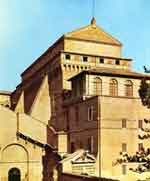 The Sistine Chapel (exterior & partial interior view left) houses the Temptation of Christ (below), Botticelli's contribution to The Life of Christ fresco series which he began painting in July of 1481. Sierra Leone used a miniature version of this fresco for their 1985 issued postage stamp. 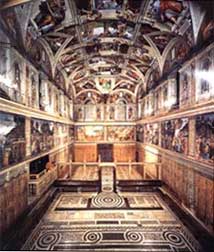 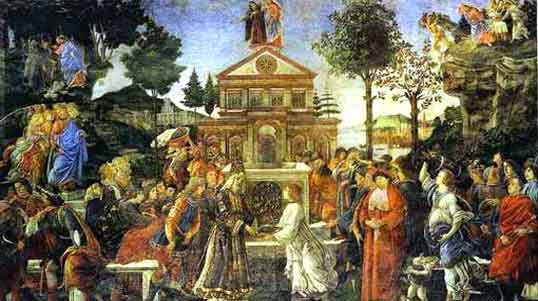 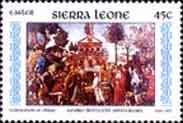 Around the same time as the Sistine Chapel frescoes Botticelli also completed two of his most famous works, which are thought to have been for Lorenzo di Medici. Both paintings embrace the ideas of spirituality and morality that were popular in the Medici social circles. The Allegory of Spring (left) 1477-78 ~ Also known as Primavera or simply just Spring. the painting depicts the Goddess in the center, featured on the San Marino stamp issued in 1972. To her left is Mercury and the three Graces. The Graces alone are shown on the U.S. issued Pan Am stamp. Above the Goddess is Amour, more commonly known as Cupid and the subject of the 1996 issued Ghana stamp. To her right are Spring, Flora, and Zephyr. Flora who is taking flowers from spring is cropped and shown on the Guinea-Bissau stamp issued in 1985. 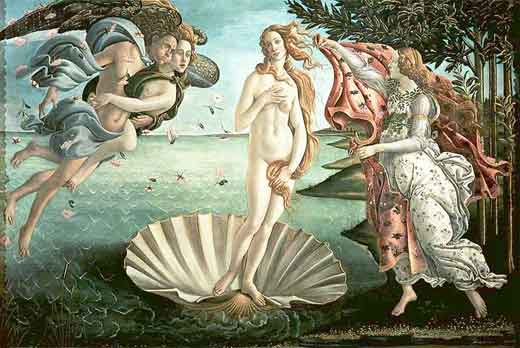 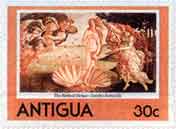 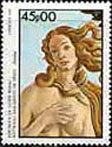 Birth of Venus (right) 1483 While Antigua issued a stamp in 1980 Not only was Botticelli a talented artist; he was a talented artist who could work on multiple pieces simultaneously and in more than one artistic style. This can be seen in his fresco St. Augustine In His Study, which was painted in 1480. 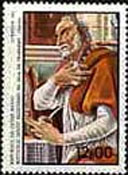 St. Augustine In His Study (right) 1480 ~ This fresco was painted for the Florentine Church of the Ognissanti. Painted nearby is a fresco by Domenico Ghirlandaio, St. Jerome In His Study (left). Notice in Botticelli's his absolute attention to realistic detail and the human emotion captured in In 1985 Guinea-Bissau issued the stamp right, which focuses in on St. Augustine's expression. 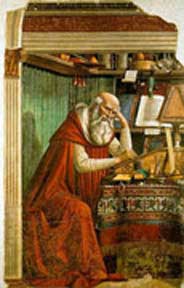 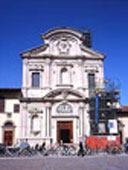 Domenico Ghirlandaio's During his most successful years as a painter Botticelli produced a line of panels, which all featured the Madonna & Child. Madonna of the Magnificat (left) 1485 ~ This piece is said to be the most beautiful of all of Botticelli's panel paintings, showing off his now recognizable feminine figure. The stamp issued in 1968 by St. Kitts-Nevis does not focus on Botticelli's command of the feminine figure; however the cropped image creates intrigue because of what is not seen.   Madonna of the Rose Garden (right) 1469-70 ~ This Madonna painting is an earlier one, before Botticelli completely perfected the natural grace and softness that his feminine figures are known for. 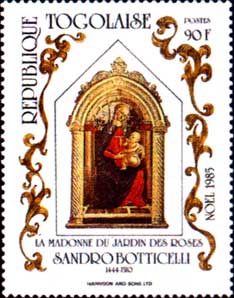 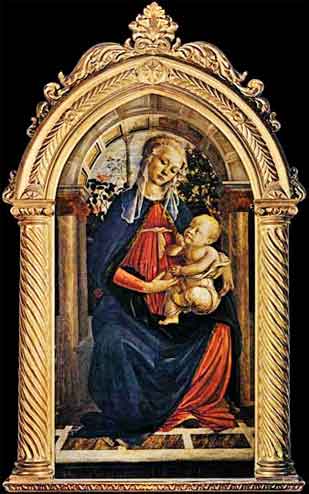 Togo issued the stamp seen here (right) in 1985, which features a scaled down version of the work along with some decorative scroll work that mimics that seen around the Madonna and Child. 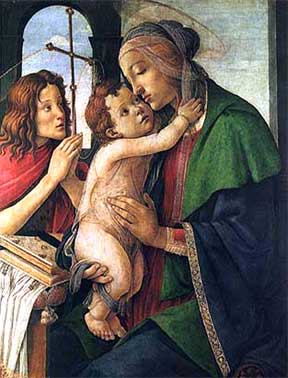 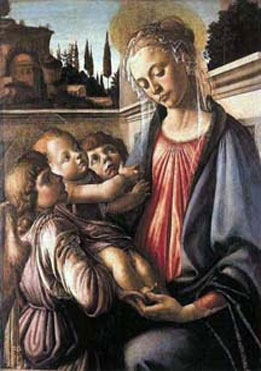 Madonna & Child With Two Angels (left) 1470 ~ Completed just after Madonna of the Rose Garden this portrayal of femininity is already more refined capturing a mother's gentle nurturing side. Perhaps the more refined technique displayed in this work is the reason why at least three countries have used it on postage stamps. The first two countries; Guinea-Bissau & Burkina Faso, issued their stamps in 1985. The stamp from Guinea-Bissau crops out most of the painting focusing on the subdued expression on the Madonna's face. Burkina Faso's approach was to show a miniature version of the work which, twenty years later in 2005 was also the approach taken by Dominica. 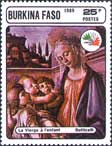 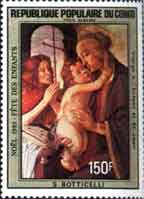  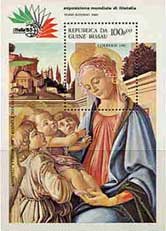 Madonna & Child With St. John (left) 1500 ~ This was one of Botticelli's later Madonna pieces. There is a softness to the entire painting and a certain amount of sincerity in the expressions on the faces. Also, notice the attention to detail, especially in regards to the translucence and weightlessness of the halos. Congo PR issued a stamp in 1984 using this painting (left); however much of the detail was lost in the process. During the 1490s Botticelli became fascinated by the Apocalypse and the impending doom to be brought with the turn of the century. This influenced his work greatly as it became more severe and strict. 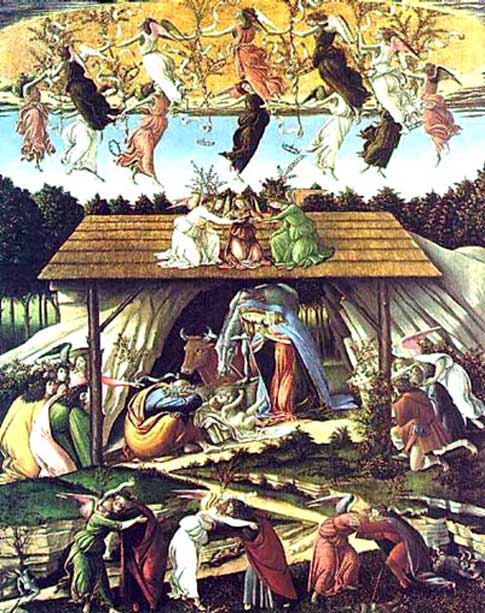 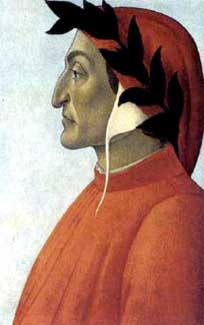 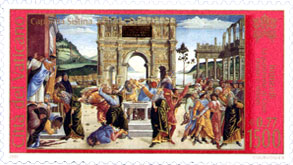 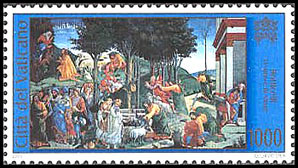 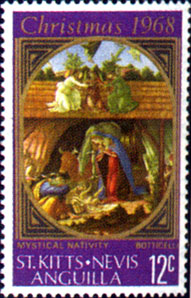 Botticelli painted this Portrait of Dante Alighieri (author of Divine Comedy, dealing with medieval beliefs of the after-life) in 1495 during his somewhat dark period. Botticelli also drew the illustrations for Dante's Divine Comedy as well as using Dante and hell as subject matters for a few of his frescoes. The Vatican issued three stamps in 1965 depicting these Dante frescoes. 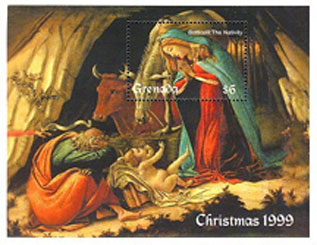 Mystic Nativity (below) 1500 ~ One of the last of Botticelli's paintings and the only one with his signature, the Mystic Nativity is considered a momentous work. This piece too was influenced by the Apocalypse creating spiritual conflict. There is even a cryptic inscription (which was partially erased) forecasting the end of the world and the beginning of something new. Two stamps issued depicting this work are from Grenada and St. Kitts-Nevis. The 1968 issue from St. Kitts-Nevis shows most of the painting, cropped by a border that feels as if one is looking through a window at it. The Grenada issue; which came five years later in 1973, left out the majority focusing in on the centrally located manger scene. The stamp itself singles out the Madonna perfectly capturing Botticelli's mastery of feminine form and features. American Artists - ArticlesLearn about these artists in articles from "Masterpieces on U.S. Stamps" as seen in U.S. Stamp News Monthly Magazine! Not much is known about the last years of Sandro Botticelli's life. He died in May of 1510 and was buried in Ognissanti cemetery next to the Florentine Church of the Ognissanti where is fresco of St. Augustine in His Study resides.
Stamp News Now is proud to present:
|
| Stamp News Now . 42 Sentry Way . Merrimack, NH 03054 . Call Free: 603-424-7556 . Email: [email protected] ©2025 Stamp News Now, All Rights Reserved |